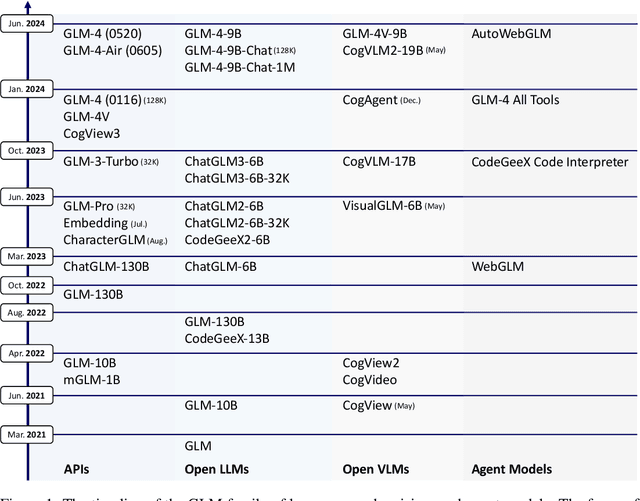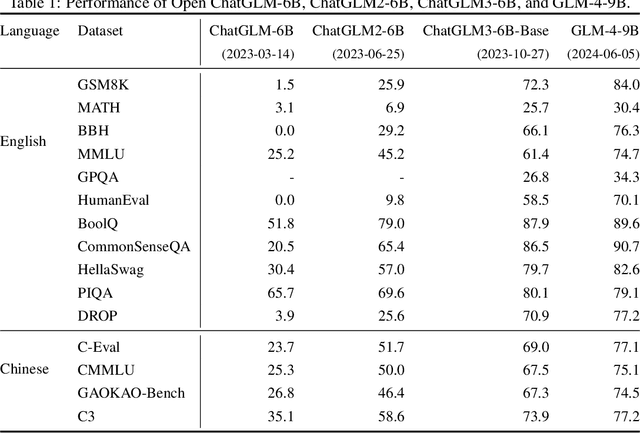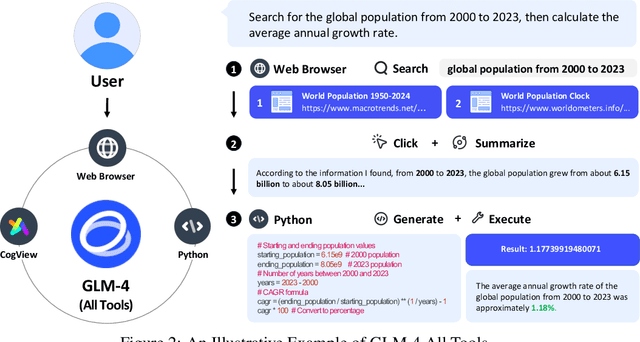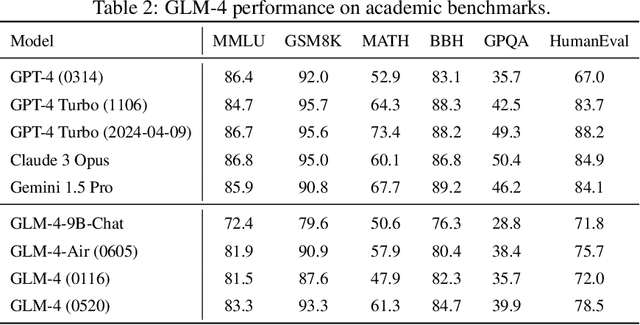Jiayi Gui
LogicGame: Benchmarking Rule-Based Reasoning Abilities of Large Language Models
Sep 05, 2024



Abstract:Large Language Models (LLMs) have demonstrated notable capabilities across various tasks, showcasing complex problem-solving abilities. Understanding and executing complex rules, along with multi-step planning, are fundamental to logical reasoning and critical for practical LLM agents and decision-making systems. However, evaluating LLMs as effective rule-based executors and planners remains underexplored. In this paper, we introduce LogicGame, a novel benchmark designed to evaluate the comprehensive rule understanding, execution, and planning capabilities of LLMs. Unlike traditional benchmarks, LogicGame provides diverse games that contain a series of rules with an initial state, requiring models to comprehend and apply predefined regulations to solve problems. We create simulated scenarios in which models execute or plan operations to achieve specific outcomes. These game scenarios are specifically designed to distinguish logical reasoning from mere knowledge by relying exclusively on predefined rules. This separation allows for a pure assessment of rule-based reasoning capabilities. The evaluation considers not only final outcomes but also intermediate steps, providing a comprehensive assessment of model performance. Moreover, these intermediate steps are deterministic and can be automatically verified. LogicGame defines game scenarios with varying difficulty levels, from simple rule applications to complex reasoning chains, in order to offer a precise evaluation of model performance on rule understanding and multi-step execution. Utilizing LogicGame, we test various LLMs and identify notable shortcomings in their rule-based logical reasoning abilities.
ChatGLM: A Family of Large Language Models from GLM-130B to GLM-4 All Tools
Jun 18, 2024



Abstract:We introduce ChatGLM, an evolving family of large language models that we have been developing over time. This report primarily focuses on the GLM-4 language series, which includes GLM-4, GLM-4-Air, and GLM-4-9B. They represent our most capable models that are trained with all the insights and lessons gained from the preceding three generations of ChatGLM. To date, the GLM-4 models are pre-trained on ten trillions of tokens mostly in Chinese and English, along with a small set of corpus from 24 languages, and aligned primarily for Chinese and English usage. The high-quality alignment is achieved via a multi-stage post-training process, which involves supervised fine-tuning and learning from human feedback. Evaluations show that GLM-4 1) closely rivals or outperforms GPT-4 in terms of general metrics such as MMLU, GSM8K, MATH, BBH, GPQA, and HumanEval, 2) gets close to GPT-4-Turbo in instruction following as measured by IFEval, 3) matches GPT-4 Turbo (128K) and Claude 3 for long context tasks, and 4) outperforms GPT-4 in Chinese alignments as measured by AlignBench. The GLM-4 All Tools model is further aligned to understand user intent and autonomously decide when and which tool(s) touse -- including web browser, Python interpreter, text-to-image model, and user-defined functions -- to effectively complete complex tasks. In practical applications, it matches and even surpasses GPT-4 All Tools in tasks like accessing online information via web browsing and solving math problems using Python interpreter. Over the course, we have open-sourced a series of models, including ChatGLM-6B (three generations), GLM-4-9B (128K, 1M), GLM-4V-9B, WebGLM, and CodeGeeX, attracting over 10 million downloads on Hugging face in the year 2023 alone. The open models can be accessed through https://github.com/THUDM and https://huggingface.co/THUDM.
 Add to Chrome
Add to Chrome Add to Firefox
Add to Firefox Add to Edge
Add to Edge